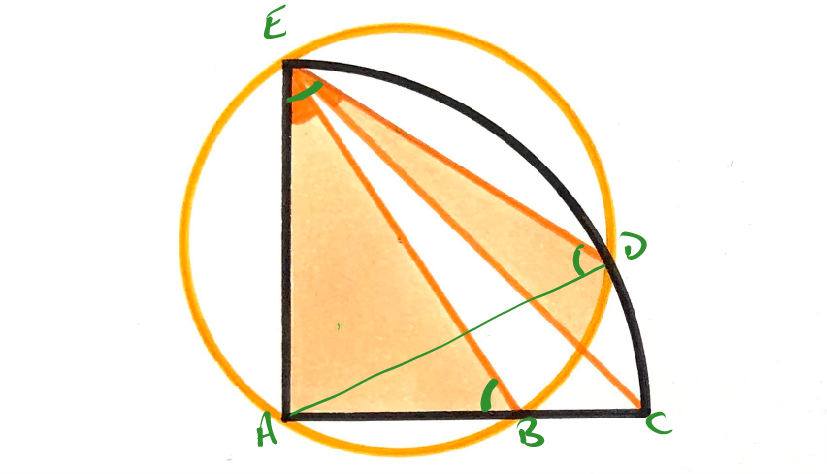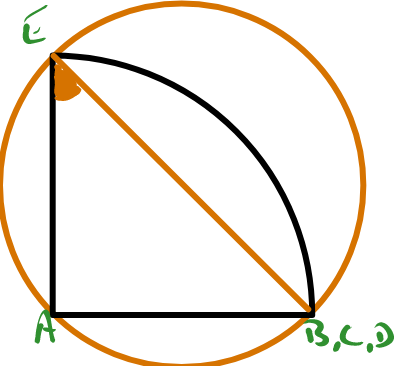Notes
quarter circle overlapping a circle solution
Solution to the Quarter Circle Overlapping a Circle Problem
Using Angles in a Circle

Using the labels from the above diagram, the total angle that we want to calculate can be written as:
Now, angles and are the same because they are subtended at the orange circle from the same chord. Then angles and are the same because triangle is isosceles as sides and are both radii of the black quarter circle.
Since triangle is a right angled triangle, . Since triangle is isosceles, angle . Combining these, we get:
Using the Invariance Principle
In this problem, the size of the orange circle can change so we can invoke the Agg invariance principle. As it varies, the location of point (in the above diagram) slides between and . By sliding it to , the angle becomes while the other two angles become zero.
